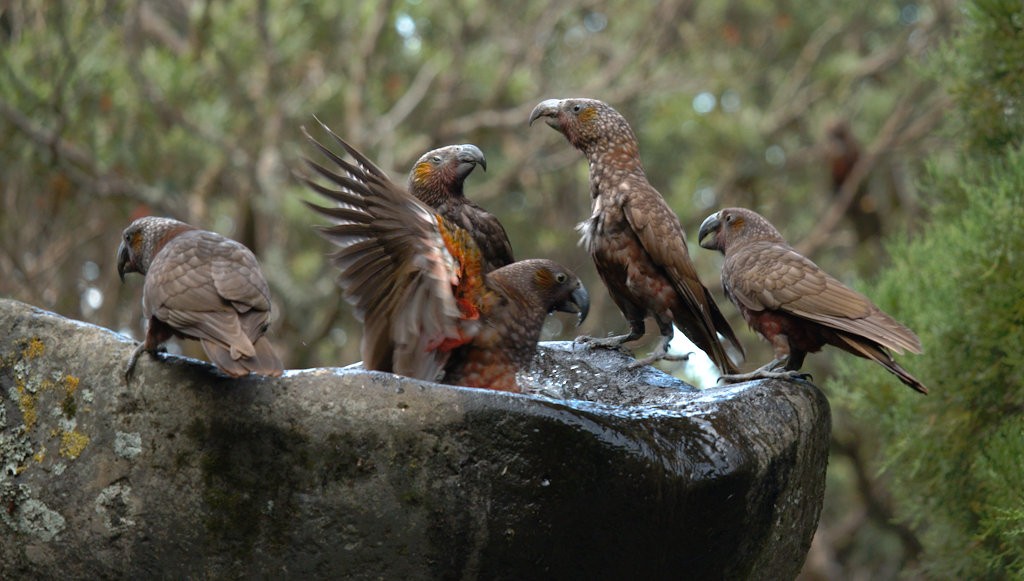New Zealand Kaka
A species of Kaka and Kea Scientific name : Nestor meridionalis Genus : Kaka and Kea
New Zealand Kaka, A species of Kaka and Kea
Botanical name: Nestor meridionalis
Genus: Kaka and Kea
Content
Description People often ask General Info
 Photo By Mcbeath k , used under CC-BY-SA-4.0 /Cropped and compressed from original
Photo By Mcbeath k , used under CC-BY-SA-4.0 /Cropped and compressed from original Description
The new Zealand Kaka is a loud, forest-dwelling parrot. They have a harsh, grating call that sounds like a "Ka-kaaaaa," hence their name. They also like to whistle, and the females make other guttural noises during mating season. However, interestingly, they also are known to whistle a tune of beautiful notes while perched.
Size
45 cm
Life Expectancy
20 years
Nest Placement
Cavity
Feeding Habits
New Zealand Kaka consumes a diverse diet: fruits, berries, seeds, nectar, sap, and invertebrates. Utilizes a robust beak for extracting seeds and grubs, and a specialized brush tongue for nectar. Feeding behavior includes shredding cones and bark stripping to access sap.
Habitat
New Zealand Kaka predominantly inhabits lowland to mid-altitude native forests in broad geographical regions that include offshore reserves and mainland island sanctuaries. This species thrives within dense woodland ecosystems that support its feeding and nesting requirements. Despite facing habitat challenges, conservation efforts have facilitated new Zealand Kaka's successful reintroduction and population growth in protected natural reserves.
Dite type
Omnivorous
People often ask
General Info
Feeding Habits
Bird food type
Behavior
Kaka are mainly arboreal and occupy mid-to-high canopy. Often seen flying across valleys or calling from the top of emergent trees. They are very gregarious and move in large flocks often containing kea where present. 
Distribution Area
The New Zealand kaka lives in lowland and mid-altitude native forest. Its strongholds are currently the offshore reserves of Kapiti Island, Codfish Island and Little Barrier Island. It is breeding rapidly in the mainland island sanctuary at Zealandia with over 800 birds banded since their reintroduction in 2002. From their reintroduction in 2002 the North Island kaka continue to re-colonise Wellington and a recent report shows a significant increase in their numbers over the last 12 years. 
Species Status
The New Zealand kaka is considered endangered (CITES II). It has greatly declined across its traditional range as a result of habitat loss, predation by introduced predators such as cats, rats, possums and stoats, and competition from wasps and bees for the honeydew excreted by scale insects. A closely related species, Nestor productus, the Norfolk kaka, became extinct in 1851 for similar reasons. 
Scientific Classification
Phylum
Chordates Class
Birds Order
Parrots Family
Parrots Genus
Kaka and Kea Species
New Zealand Kaka